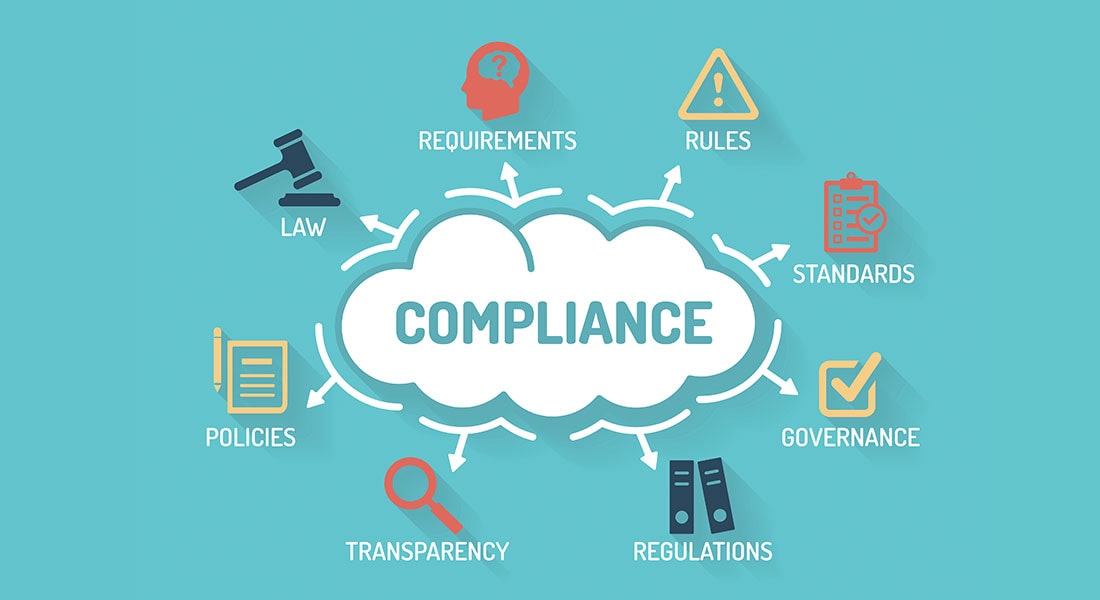Compliance Training Made Convenient: Self-Paced Learning Strategies for Success
Explore the effective strategies and future trends shaping effective compliance training with this comprehensive guide to self-paced learning.

In today's rapidly evolving business landscape, compliance training has become more crucial than ever. Ensuring that your team understands and adheres to industry regulations is not only a legal requirement but also a vital component of maintaining a trustworthy and ethical organization. However, traditional methods of compliance training often fall short in terms of engagement and effectiveness. Enter self-paced learning – a revolutionary approach to compliance training that offers unparalleled convenience and effectiveness. In this blog post, we'll explore how self-paced learning strategies can transform your compliance training efforts and set your team up for success.
Not Getting Desirable Results with Traditional Compliance Training Methods?
Try Self-Paced Learning, here are a few benefits to get started -
- Flexibility and convenience
- Improved engagement and retention
- Adaptable learning paths
- Progress tracking and reporting
Benefits of Self-Paced Learning for Compliance Training
1. Flexibility and Convenience
Unlike traditional classroom-based training, self-paced learning allows employees to access training materials whenever and wherever it suits them. This flexibility accommodates different schedules and learning preferences, ensuring that each team member can engage with the content at their optimal pace.
2. Improved Engagement and Retention
Self-paced learning leverages interactive elements such as quizzes, simulations, and case studies. These tools actively engage learners and enhance information retention by encouraging active participation and critical thinking.

3. Adaptable Learning Paths
Self-paced learning platforms often provide the option to customize learning paths based on individual roles, skill levels, and existing knowledge. This tailoring ensures that each employee receives the most relevant training, maximizing the impact of the program.
4. Progress Tracking and Reporting
Self-paced learning platforms offer robust tracking and reporting features. Supervisors and administrators can monitor each learner's progress, identifying areas of strength and pinpointing where additional support may be needed.
→ Download eBook Now: The State of Learning
Step-by-Step Guide to Implementing Self-Paced Learning for Compliance Training
1. Assessment and Analysis
Before diving into content creation, embark on a thorough assessment of your organization's compliance needs. This includes identifying the specific regulations, industry standards, and internal policies that apply to your business. Conduct a comprehensive training needs analysis to pinpoint knowledge gaps and areas of potential risk. This initial step forms the foundation for designing a targeted and effective self-paced learning curriculum.
2. Content Creation and Curation
Developing engaging and relevant content is paramount to the success of self-paced compliance training. Create or curate content that not only imparts essential information but also captures learners' attention. Incorporate a variety of media formats, such as videos, interactive modules, infographics, and case studies, to cater to different learning styles. Content should be accurate, up-to-date, and aligned with your organization's compliance objectives.
3. Platform Selection
Choosing the right self-paced learning platform is a critical decision. Consider user-friendliness, customization options, scalability, and integration capabilities when evaluating platforms. The chosen platform should offer a seamless and intuitive experience for learners, making navigation and engagement effortless. Ensure that the platform supports various devices, including computers, smartphones, and tablets, to facilitate anytime, anywhere learning.
4. Module Design and Sequencing
Break down compliance topics into well-structured, bite-sized modules that follow a logical sequence. Each module should have clear learning objectives, outlining what learners will be able to do upon completing the module. The sequence of modules should build upon each other, facilitating a gradual understanding of complex compliance concepts. This stepwise microlearning approach ensures that learners can grasp fundamental concepts before delving into more advanced material.
5. Interactive Elements and Assessments
Interactivity is a cornerstone of effective self-paced learning. Incorporate interactive elements, such as quizzes, case studies, simulations, and interactive scenarios, to promote active engagement and critical thinking. These elements provide learners with opportunities to apply their knowledge in practical situations, enhancing understanding and retention. Regular eLearning assessment, including knowledge checks and quizzes, help reinforce learning and allow learners to gauge their progress.
6. Monitoring and Progress Tracking
Implement a robust system for monitoring learner progress and performance. A well-designed self-paced learning platform should provide comprehensive tracking and reporting features. Supervisors and administrators can access data on completion rates, assessment scores, and engagement metrics. Regularly reviewing this data allows for informed decision-making and enables interventions when learners require additional support or guidance.
Tips for Overcoming Challenges
- Change Management: Introduce the concept of self-paced learning gradually to employees and stakeholders. Clearly communicate the benefits and address any concerns to ensure a smooth transition.
- Content Relevance: Regularly update and refresh your training content to reflect the latest regulations and industry changes. Keep the material engaging and relevant to maintain learner interest.
- Technical Support: Provide readily accessible technical support for learners who may encounter platform-related issues. A responsive support system contributes to a positive learning experience.
- Motivation and Accountability: Foster a sense of accountability by setting milestones and goals for learners. Recognize and reward achievements to motivate continued engagement.
Trends in Self-Paced Learning for Compliance Training
1. AI-Powered Personalization
Artificial Intelligence (AI) is poised to revolutionize self-paced learning by offering personalized experiences. AI algorithms will analyze learners' interactions, preferences, and progress data to tailor training content and recommendations. Learners can receive targeted modules and resources that address their specific needs, ensuring a more engaging and relevant learning journey.
2. Microlearning and Mobile Integration
The trend towards microlearning, which involves delivering content in small, bite-sized chunks, is gaining momentum. This approach aligns perfectly with self-paced learning, allowing learners to consume information in short bursts. Furthermore, mobile integration has become even more critical, enabling employees to access compliance training seamlessly on their smartphones and tablets. This flexibility ensures that learning can happen anytime and anywhere, enhancing accessibility and engagement.
3. Gamification, Augmented Reality (AR), and Virtual Reality (VR)
Gamification, the integration of game elements into non-game contexts, is set to play a significant role in the effectiveness of self-paced compliance training. Points, badges, leaderboards, and rewards can transform the learning experience into an engaging challenge. Moreover, Virtual Reality (VR) and Augmented Reality (AR) technologies are poised to provide immersive learning environments for compliance training. Employees can navigate realistic scenarios and make decisions within a controlled virtual space, enhancing understanding and practical application of compliance principles.
4. Data-Driven Insights and Predictive Analytics
Data analytics will become even more integral to self-paced compliance training. Learning platforms will leverage data to provide insights into learner behavior, engagement patterns, and areas of strength or weakness. Predictive analytics will anticipate learning gaps and suggest personalized interventions, allowing organizations to proactively address compliance training needs. Mentioned below are a few types of predictive modeling to help you categorize the implementation of predictive analytics more precisely.

Conclusion
Self-paced learning has ushered in a new era of convenience and effectiveness in compliance training. By following the outlined strategies, your organization can harness the power of self-paced learning to ensure employees are well-versed in regulations and equipped to maintain ethical standards. Embrace this transformative approach and empower your team to excel in compliance. If you are keen to know the state of learning in the coming years, make sure you check out this insightful eBook.





